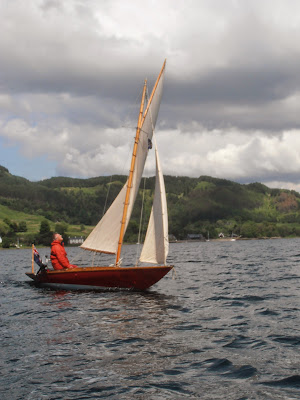Featured post
The Scottish Islanders
It’s been great fun, and quite emotional at times, getting feedback from people who’ve read The Scottish Islanders. Stories have come in f...

Friday 22 July 2022
Brian Corbett
Thursday 21 July 2022
A short Summer Trip that ended with some fun
At last there was a prospect of nice settled weather, sunny with gentle breezes, so it seemed a good idea to set off for a couple of days. With a fine crew, The First Mate and her pal, the newly appointed Cabin Girl being both on annual leave we duly left the anchorage in Loch na Cille in light airs and drifted down the loch on a falling tide, the idea being to stop for lunch at Caisteal nan Coin and wait for the Cuan Sound to open its gate for us two hours before High Water Oban. In the event we were there pretty well at opening time and found a gentle breeze as we entered, giving us the required ability to steer, although in the Sound the tide does most of the work.


 |
| Kerrera in the distance |
 |
| Evening |
 |
| Early Morning, Second Day |
 |
| Ardfad from the sea |





Monday 13 June 2022
The Fife Regatta 2022
With the regatta back for the fifth time and the fleet in Rothesay it's timely to share the article I wrote about the "Other Fifes"!
Saturday 8 January 2022
The Ferry to Leith
The Wherrymen

Two old friends on the water














